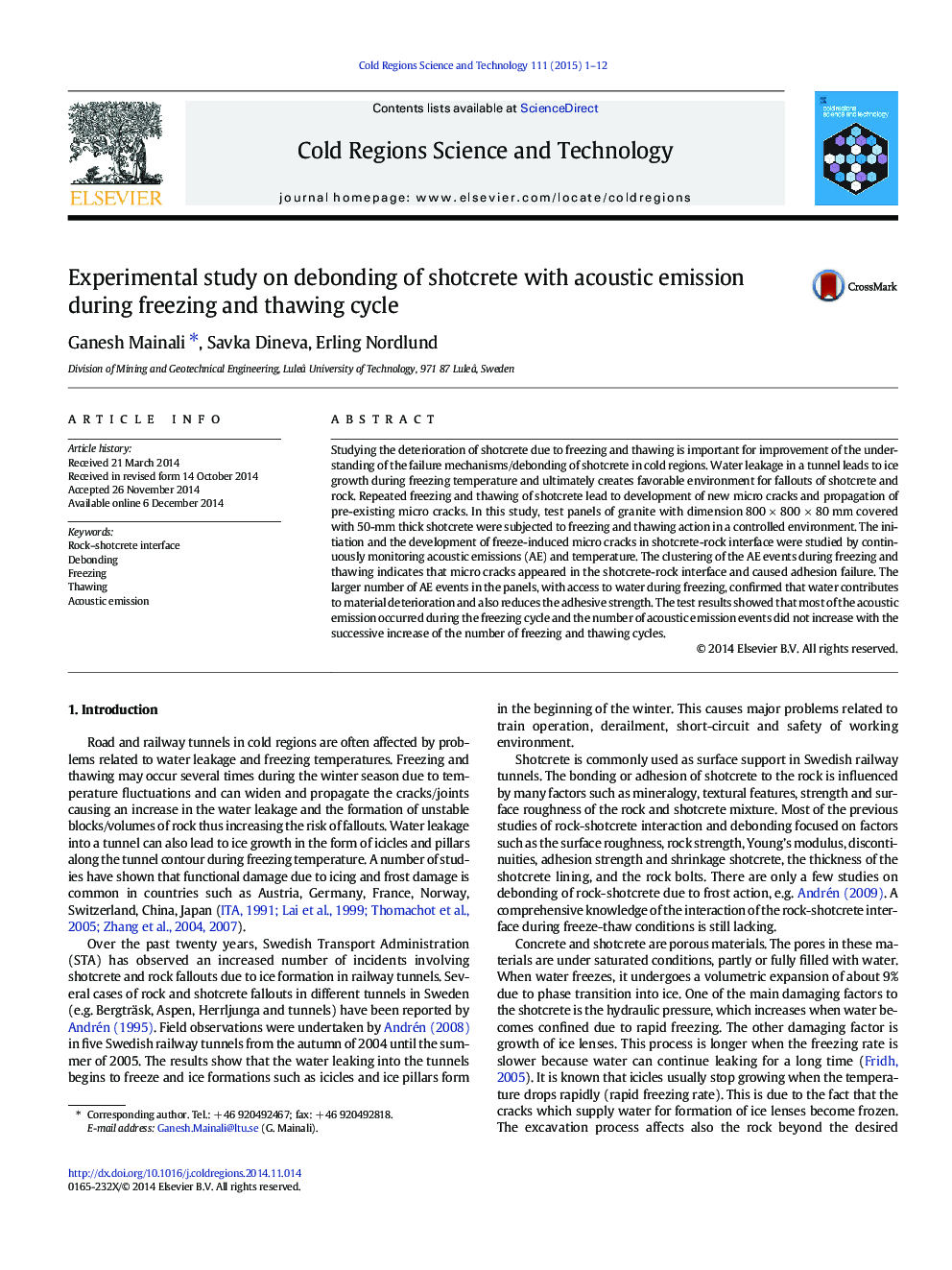| Article ID | Journal | Published Year | Pages | File Type |
|---|---|---|---|---|
| 4675717 | Cold Regions Science and Technology | 2015 | 12 Pages |
•Freeze-induced deboning in the rock-shotcrete interface is studied.•AE was used as an indicator of the micro-cracking and debonding.•The most of AE events were generated during the freezing cycles.•The expansion ice causes the deterioration in the rock-shotcrete interface.
Studying the deterioration of shotcrete due to freezing and thawing is important for improvement of the understanding of the failure mechanisms/debonding of shotcrete in cold regions. Water leakage in a tunnel leads to ice growth during freezing temperature and ultimately creates favorable environment for fallouts of shotcrete and rock. Repeated freezing and thawing of shotcrete lead to development of new micro cracks and propagation of pre-existing micro cracks. In this study, test panels of granite with dimension 800 × 800 × 80 mm covered with 50-mm thick shotcrete were subjected to freezing and thawing action in a controlled environment. The initiation and the development of freeze-induced micro cracks in shotcrete-rock interface were studied by continuously monitoring acoustic emissions (AE) and temperature. The clustering of the AE events during freezing and thawing indicates that micro cracks appeared in the shotcrete-rock interface and caused adhesion failure. The larger number of AE events in the panels, with access to water during freezing, confirmed that water contributes to material deterioration and also reduces the adhesive strength. The test results showed that most of the acoustic emission occurred during the freezing cycle and the number of acoustic emission events did not increase with the successive increase of the number of freezing and thawing cycles.
